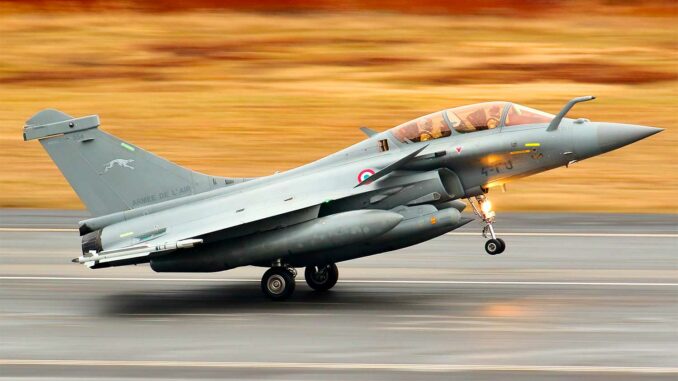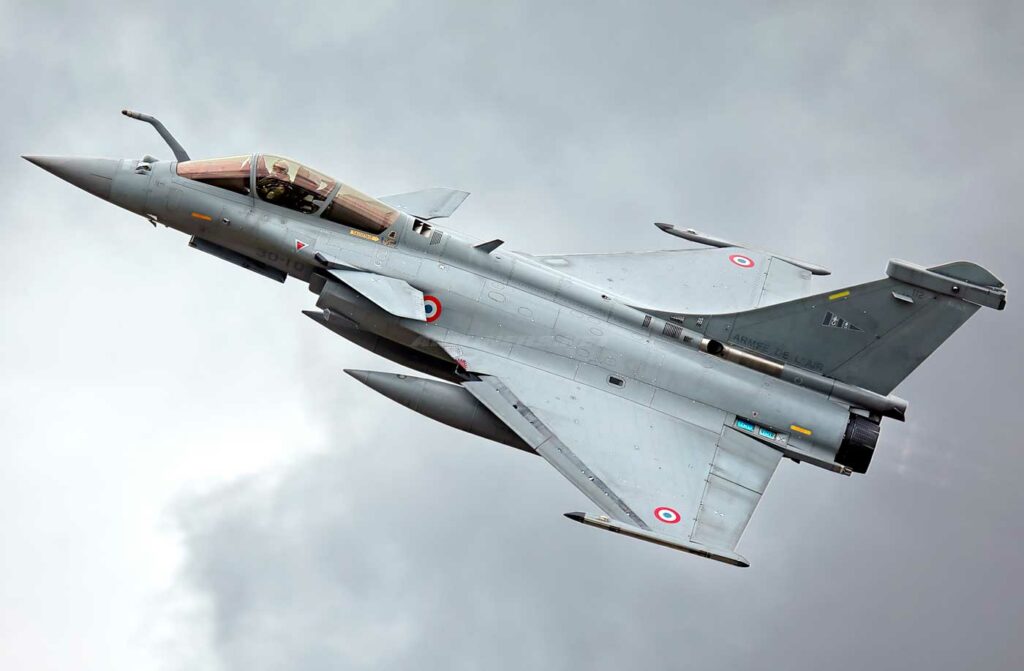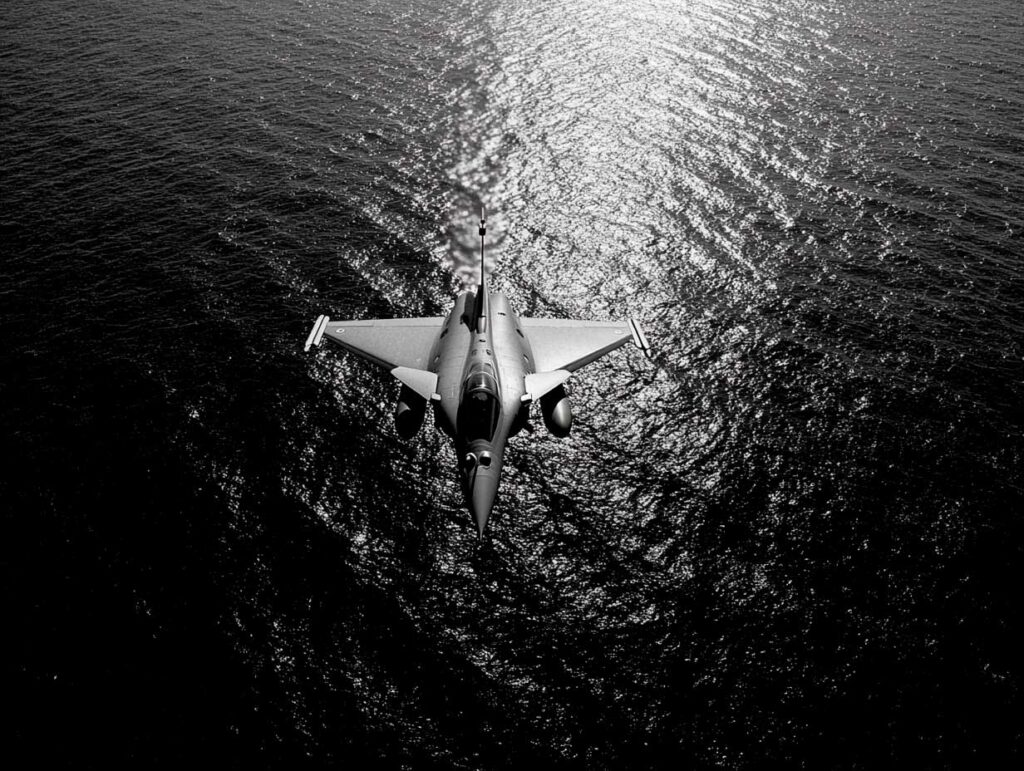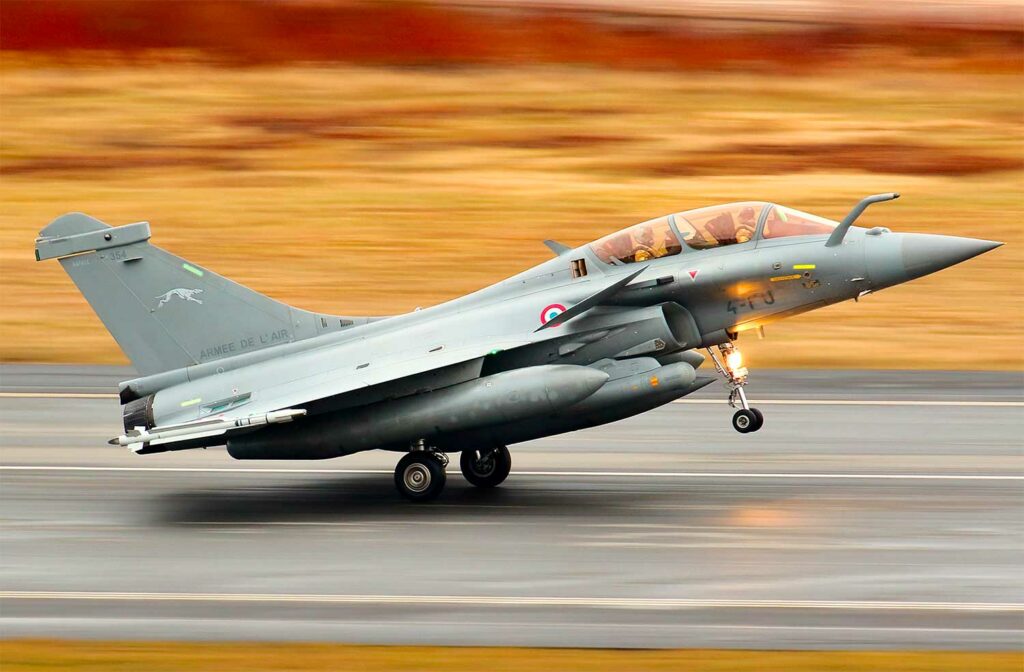
Discover 10 unusual and technical facts about the Rafale, the iconic French fighter jet designed for air superiority and nuclear deterrence.
The Rafale fighter jet, designed by Dassault Aviation, is often described as one of the most versatile multi-role fighters in the world. It is currently used by the French Air Force and Navy, as well as several foreign forces. But beyond the classic performance figures listed in the technical specifications, the Rafale has a number of features that are little known to the general public, making it as sophisticated as it is versatile. From its fully autonomous self-protection system to its unique ability to refuel another aircraft, every detail reflects a design that has been optimized for mission performance in all conditions.
1. The Rafale Marine can take off without an American catapult
The Rafale M, the naval version of the Rafale fighter jet, is one of the few fighters in the world capable of taking off from an aircraft carrier without using an American CATOBAR (Catapult Assisted Take-Off But Arrested Recovery) catapult. This unique capability stems from the configuration of the Charles-de-Gaulle aircraft carrier, the only nuclear-powered surface vessel outside the United States equipped with a ski jump and arresting wires.
Thanks to its reinforced landing gear and the significant thrust delivered by its two Snecma M88 engines, the Rafale M can perform a ski-jump assisted take-off with a reduced payload while maintaining its combat capabilities. This technological independence allows France to operate its French fighter jet without relying on foreign systems. The Rafale M can thus carry out air defense, reconnaissance, or deep strike missions in a strictly national context, from the sea. This capability is particularly strategic in the context of power projection without allied logistical support.

2. A fully autonomous electronic warfare system
One of the Rafale’s key features is its SPECTRA (Système de Protection et d’Évitement des Conduites de Tir pour le Rafale) electronic warfare system. Designed by Thales and MBDA, this system combines several critical functions: radar warning, laser warning, radiation detection, active jamming, and infrared and electromagnetic decoy ejection.
What sets SPECTRA apart is its fully automated operation. As soon as a threat is detected, it can activate the appropriate countermeasures on its own without intervention from the fighter pilot, reducing the mental load during missions. In addition, it is capable of mapping the electromagnetic environment in real time, allowing the Rafale to operate in heavily defended areas without relying on a dedicated electronic warfare aircraft.
This autonomy increases the fighter’s survivability in contested environments and makes the Rafale more suitable for first-entry operations, in a role equivalent to that of a SEAD (Suppression of Enemy Air Defenses). This is a major strategic advantage over other multirole aircraft.
3. Passive stealth, designed from the outset
The Rafale is not a stealth aircraft like the F-35. However, its design incorporates passive radar signature reduction. The Rafale’s airframe has been designed to minimize reflective surfaces: rounded shapes, slanted tailplanes, integration of weapons under fairings, and use of composite materials.
This architecture reduces the radar signature by 70% compared to that of a Mirage 2000. The Rafale’s stealth treatment is complemented by absorbent paint and air intake treatments that limit the frontal visibility of the engine compressor.
By combining this passive stealth with SPECTRA’s advanced detection, the Rafale can approach defenses without being immediately detected. This gives the French fighter aircraft the ability to penetrate defended areas without relying solely on active stealth. This hybrid approach, which is less expensive than full stealth, is particularly well suited to multi-theater engagements.
4. Controlled supercruise capability
The Rafale is capable of flying at supersonic speeds without afterburners, a mode known as supercruise. This capability, made possible by the aerodynamic efficiency of the airframe and the dry thrust of the M88 engines, allows the aircraft to maintain a speed of approximately Mach 1.4 without excessive fuel consumption.
In air superiority missions, this mode of propulsion offers two strategic advantages: a reduction in thermal signature, as the absence of afterburning limits the infrared drag detectable by IR-guided missiles, and extended range, allowing the fighter pilot to remain in the area of operation for longer.
Supercruise is a sought-after capability for 5th and 6th generation fighter aircraft. The fact that the Rafale can achieve it without any special devices demonstrates a successful balance between design, engine power, and weight. Few non-US fighters in operational service have this capability.

5. A Rafale can refuel another Rafale
The Rafale has a buddy-buddy refueling pod, enabling it to refuel another Rafale in flight. This light tactical refueling capability is essential when no refueling aircraft (such as the A330 MRTT or KC-135) are available in the mission area.
The pod can be mounted under one of the Rafale’s wings. A single aircraft can then transfer fuel to one or two other aircraft as part of a planned operation. This allows the mission to be extended without relying on heavy logistics. For the fighter pilot, this solution offers greater flexibility in the event of a long-range mission or an unexpected return.
This feature, rare among Western fighters, gives the Rafale increased tactical autonomy, particularly in isolated areas or during shipboard operations. It fits perfectly with the French military’s desire for operational independence.
6. Compatibility with non-French weapons
Although developed to integrate French missiles (MICA, SCALP, Meteor, ASMP-A), the Rafale can be adapted to foreign weapons. At Qatar’s request, the American AMRAAM missile was integrated into the weapon system, demonstrating the fighter’s software modularity.
This ability to accept non-native weapons is valuable for export. It allows user forces to maintain interoperability with their existing stocks or with NATO systems. For mission engineering, this means that the firing, identification, and communication systems are adaptable to other doctrines.
The Rafale’s openness to different weapon standards demonstrates the flexibility of its avionics architecture. This is a key point in export negotiations and a strength that will keep the Rafale relevant for decades to come.
7. Exceptional maneuverability at low speeds
One of the rarely highlighted advantages of the French Rafale fighter jet is its ability to fly at very low speeds without stalling, thanks to its aerodynamic design based on a delta wing and active canards. This configuration gives the aircraft great stability and remarkable responsiveness in subsonic flight.
The Rafale can fly at around 200 km/h without losing control, which is extremely rare for a modern fighter jet. This feature is invaluable for missions involving the interception of slow-moving civilian aircraft, such as tourist planes, or in air policing situations. The fighter pilot can maintain a safe parallel flight without the risk of overtaking or stalling.
This capability is also useful for presentation phases during air shows or specific tactical approaches, for example in mountainous or urban terrain. It is an advantage that few Western fighter aircraft can claim, especially those designed for high speed only. It demonstrates the Rafale’s fine control of its moving surfaces and the quality of its fly-by-wire flight control system.

8. Proven versatility in five types of conflict
Since entering operational service, the Rafale has been deployed in at least five different theaters of operations: Libya (2011), the Sahel (Operation Barkhane), Iraq and Syria (against ISIS), Afghanistan, and more recently in exercises in Eastern Europe as part of NATO’s posture. In each of these contexts, the aircraft has demonstrated its versatility without any major structural modifications.
This adaptability is based on a modular architecture that allows the Rafale to change roles (fighter, bomber, reconnaissance, nuclear deterrence) simply by loading equipment and reprogramming the onboard systems. No dismantling or complex mechanical configuration is required.
For a fighter pilot, this means that the same airframe can perform multiple missions during a deployment, reducing logistical requirements and increasing operational responsiveness. The aircraft adapts to the mission, not the other way around. This flexibility is a significant strategic advantage in a context of rapid deployment and long-range projection.
9. A 100% French AESA radar integrated into the airframe
The Rafale is equipped with the RBE2-AA (Radar à Balayage Électronique Actif) radar, developed by Thales, one of the few AESA (Active Electronically Scanned Array) radars designed entirely in Europe. This radar can track up to 40 targets simultaneously and engage several of them at very long range with missiles such as the Meteor.
The RBE2-AA offers a range of over 200 km for air target detection. It can also map the ground, track terrain for low-altitude strikes, and track moving maritime or land targets. It is robust against electronic jamming, which provides a definite tactical advantage in modern air combat.
Unlike other aircraft that rely on American or Israeli radars, the Rafale benefits from technological independence. This facilitates the integration of algorithms specific to French doctrine and protects sensitive data. The fighter pilot can exploit the radar’s capabilities with a level of granularity and precision rarely achieved, especially in complex environments.
10. Tactical nuclear deterrence capability
The Rafale fighter jet is one of the few Western fighters capable of carrying an airborne nuclear weapon, in this case the ASMP-A (Air-Sol Moyenne Portée – Amélioré) missile with a 300-kiloton nuclear warhead. This capability is operational on the Rafale F3-R aircraft deployed within the 2/4 “La Fayette” fighter squadron.
The ASMP-A is a ramjet-powered missile capable of flying at Mach 3 over a range of 500 kilometers. This speed allows it to penetrate enemy air defenses while minimizing exposure time. The Rafale can fly at very low altitude in penetration mode, following the terrain, before launching the missile in stand-off mode (out of range of enemy defenses).
This mission is an integral part of France’s airborne nuclear deterrent. It ensures a second strike capability in the event of a nuclear attack on French territory. For a fighter pilot, this strategic responsibility requires regular training, specific preparation, and a high level of confidence in the weapons system and the reliability of the aircraft.
War Wings Daily is an independant magazine.